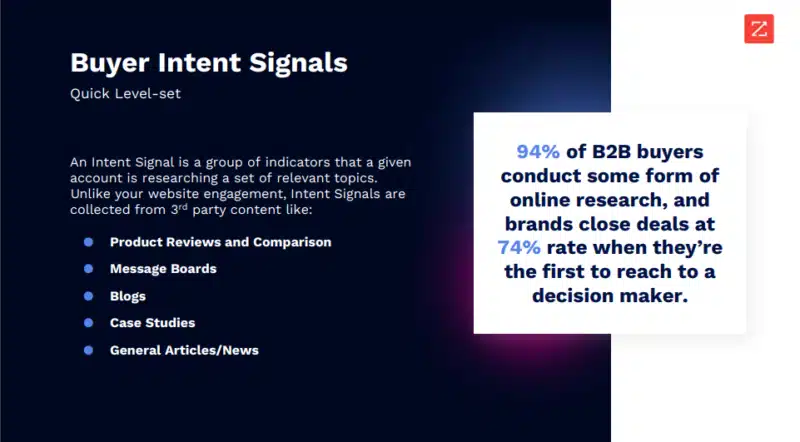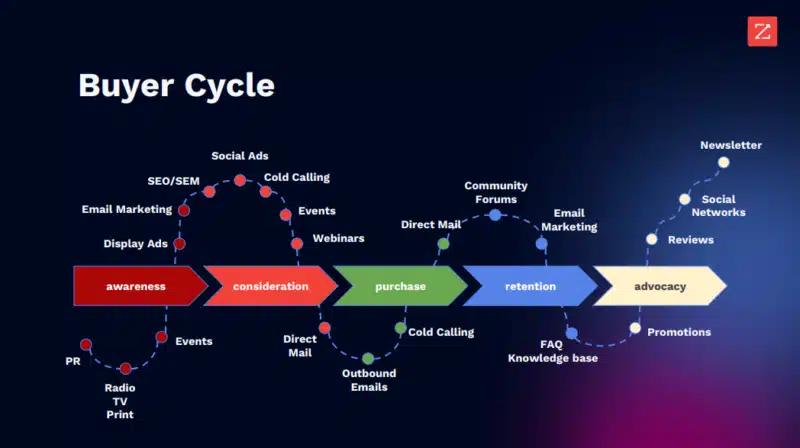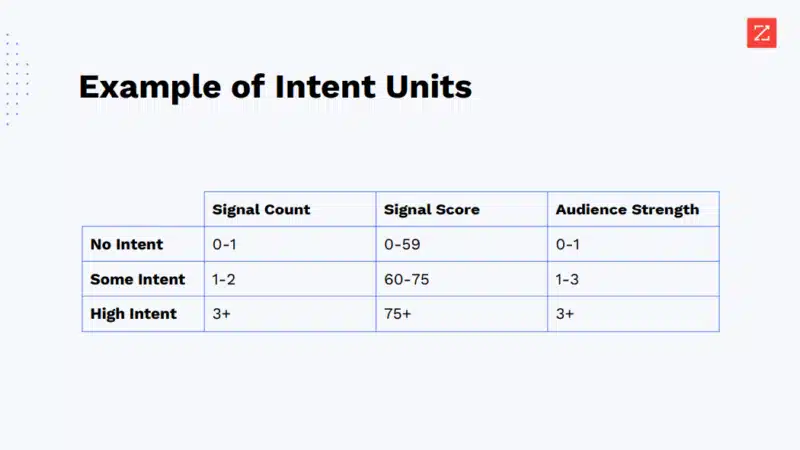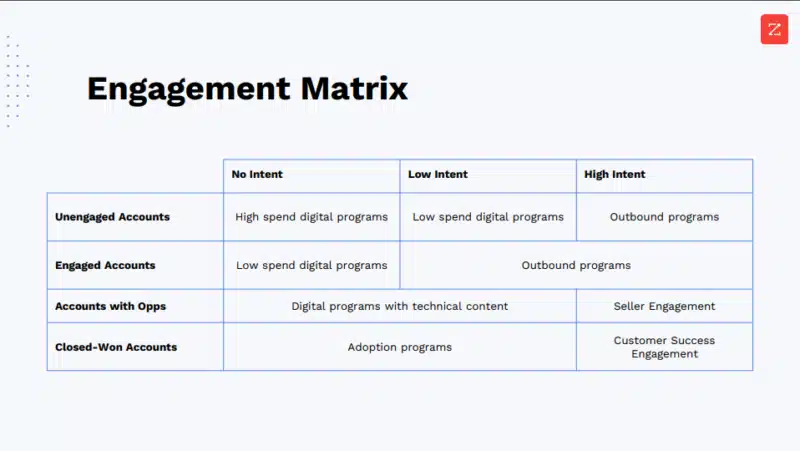How to leverage intent and engagement in the buying cycle
Applying intent data to buying cycles can help foster customer engagement.
“Buyer intent signals are a collection of indicators that tells me whether the account that I am targeting is relevant to my brand or relevant to one of my offerings,” said Hussam AlMukhtar, Senior Director of Strategic Marketing for B2B intelligence platform ZoomInfo, at our recent MarTech conference.
“Unlike first-party website engagement, intent signals are different in the sense that they are collected from third-party applications or a third-party content that I as a brand do not have access to,” he added.
Marketers can collect buyer intent data from each place they interact with customers. It can come from product reviews, message boards, blog comments, case studies, general news articles and more. Unfortunately, many marketers fail to act on this wealth of data and integrate it into their campaigns.

“94% of buyers are conducting some form of online research before getting to me as a brand,” AlMukhtar said, speaking figuratively. “That’s important because my ability to close a deal could be up to 74% if I were to be the first brand to reach a decision-maker. Given the importance of this signal, marketers have been trying to understand how to use it.”
Here are three ways marketers can better understand and leverage this valuable intent data to improve the customer buying cycle.
Review your brand’s customer buying cycle
The buying (or purchase) cycle is a visualization that tracks customers as they move through the sales funnel to reach the purchasing stage. And it’s the brand’s responsibility to guide them at each touchpoint.
“These tactics and programs have a shared responsibility across all of them and individually as well,” said AlMukhtar, “which is to generate awareness for the brand and the products and offers to effectively generate intent.”

Consumers perform a good amount of self-education before and during the buying cycle, often developing their own processes irrespective of the brand. It’s up to marketers to align their buying cycles with these processes to meet customer needs and retain leads. They need to understand where the customer is coming from.
“Our buyers are fairly tech-savvy and, more importantly, they’re privacy-conscious,” he said. “They figured out that opening an email could be tracked, that visiting a website could be tracked and attributed — they may not want that and may go around it.”

Use intent as a measurement unit
AlMukhtar described a helpful strategy he uses to measure the intent of customers within the buying cycle. By creating a table that divides customers into “intent groups,” he showed how marketers can determine each lead’s propensity to purchase: “These KPIs can be categorized into these three different units: ‘no intent,’ ‘some intent’ and ‘high intent.’ And we can use metadata that comes from these signals.”

It’s ultimately the marketer’s decision as to what determines intent level, but it should be based on specific actions customers take throughout the lead cycle, such as clicking a call-to-action button, downloading a white paper, etc. Once the results are categorized, marketing teams can more easily apply the intent insights to their campaign strategies.
“When I set up this table, I can then take the outcome of these units — the ‘no intent,’ ‘some intent’ and high intent’ — and apply it on top of the account-based funnel,” AlMukhtar said. “Then I can come up with an engagement matrix that allows me to start looking at what kind of campaigns can I execute for these different cohorts.”
Develop a customer engagement matrix
The engagement matrix framework builds on data gathered from the intent measurement table, mapping customer intent scores to actionable engagement steps. Each action item can be custom-built for the cohort in question based on how their intent score.

“If I were to take the cohort of unengaged accounts with ‘no intent,’ I might want to put them into a high-speed digital program that has the objective of generating new leads, and moving an account from ‘no intent’ to ‘low intent’ or ‘high intent,’ said AlMukhtar.”
Categorizing customers in the buying cycle this way can enable marketers to transform intent insights into more effective campaign tactics.
“Lining up the intent metrics across your account funnels helps marketers understand where they can maximize spend efficiency and where they can allocate their dollars,” he said.
Opinions expressed in this article are those of the guest author and not necessarily MarTech. Staff authors are listed here.
Related stories
New on MarTech